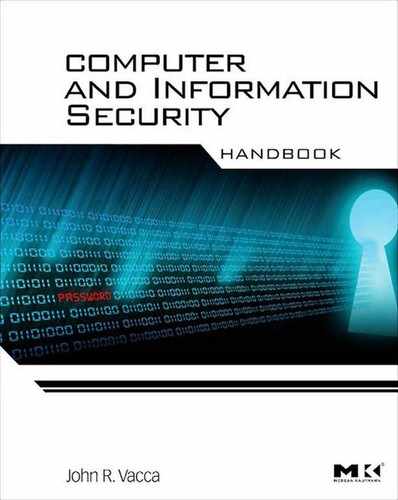Security Management and Resiliency
John R. Vacca
The United States needs to strengthen the computer security management and resilience component of its homeland security strategy to mitigate the effect of successful terrorist attacks and other disasters. As a nation, the U.S. must be able to withstand a blow and then bounce back. That’s resilience!1
The U.S. can mitigate risk but cannot guarantee that another attack will not occur, nor can it prevent natural and accidental disasters. It requires this country to admit that some disasters cannot be avoided. It also requires the U.S. to acknowledge that, faced with disaster, most citizens, businesses, and other institutions will take action to rescue themselves and others.1
According to U.S. government analysts, 86% of the country’s critical infrastructure is privately owned and operated. However, it isn’t the job of the government to do the on-the-ground work of security management and resiliency.1
The private sector can provide the means and the execution. On the other hand, it should also be the champion and the facilitator of security management and resiliency chain; balancing the interests of stakeholders; setting broad objectives and strategies; and providing oversight.s1
However, the creativity and ingenuity of the American people must also be taken into consideration, including the businesses they create. This also includes how government can prepare its citizens for a disaster or an emergency by giving them the necessary security management tools.1
The government’s first goal is to provide timely and accurate security management information during a crisis. Government must also leverage technology to help inform citizens that danger is near. The Department of Homeland Security (DHS) has created the Ready Business program, which gives small-to-medium-size businesses guidance on which security management and resiliency tools and resources are available to them to ensure business continuity.1
The government’s second goal is to provide order, so citizens can focus on disaster response, rather than protecting themselves from social chaos. While local and state forces can maintain order during a disaster; just in case they cannot, DHS is studying specialized law enforcement deployment teams (LEDTs). These teams from neighboring jurisdictions would assist local and state forces when they are taxed to the breaking point. LEDTs could help provide an organized system that would allow state and local law enforcement to assist each other to quickly resume normal police services, to an area hit by a terrorist attack or natural disaster (something Louisiana and New Orleans police did not have after Hurricane Katrina struck).1
Finally, the government can increase infrastructure security management and resilience after an attack or disaster. Nevertheless, this can be done through the dispersal of key functions across multiple service providers, flexible supply chains, and related systems.1
Business should build in such flexibility as well. Flexibility, is cheaper than redundancy, and it is also a smart business decision because it makes companies more competitive.1
A company that builds in the ability to respond to supply disruption is automatically building in the ability to respond to demand fluctuations and winning market share. For the past 16 years, AT&T has invested in mobile central offices: 500 trailers that hold everything the company needs to keep their network up and running. On 9/11, AT&T dispatched these trailers to New York because the terrorist attack had knocked out a company transport hub in the sixth subbasement of the World Trade Center’s South Tower. Within 48 hours, the trailers were operational and accepting call traffic.1
Finally, the United States has been too focused on prevention to the detriment of security management and resilience. After 9/11, the Bush administration focused solely on preventing the next attack, as opposed to how best to recover should an incident occur. That, of course, is not the best approach.1
1Matthew Harwood, “U.S. Must be More Resilient to Disasters and Terrorism, Experts Explain,” Copyright © 2008, Security Management, Security Management, ASIS International, Inc. Worldwide Headquarters USA, 1625 Prince Street, Alexandria, Virginia 22314-2818, 2008.
